
The state of open source groupware
Mail Call
With all the billions that corporations spend worldwide on groupware, market shares of just a few percent are enough for smaller suppliers to survive. In this article, we look at the latest developments in the open source groupware alternatives PostPath, Kerio, Kolab, Open-Xchange, Scalix, Tine 2.0, Zarafa, and Zimbra.
PostPath
Somewhat unlucky in its hunt for customers, PostPath [1] used to have quite a solid financial basis. Up until 2008, the team originating from Bulgaria and the United States developed a replica of Exchange that ran on Linux.
Cisco then whipped out its wallet and acquired PostPath for $215 million. Cisco's stated goal: to establish the software-as-a-service offering Cisco WebEx Mail as the counterpart to offers from Google and Microsoft.
Cisco also acquired the instant messaging pioneers Jabber Inc. a few weeks later. While Jabber lives on in Cisco communications products, WebEx Mail was counted out for good in February 2011. The terse comment from a manager at WebEx: "It didn't scale."
Kerio Connect
Kerio Technologies [2] started in 1997 as a distributor of network software; the first version of Kerio MailServer was launched in 2001. From Version 7 onward, the Californians referred to the product, which had in the meantime developed into groupware, as Kerio Connect (Figures 1 and 2).
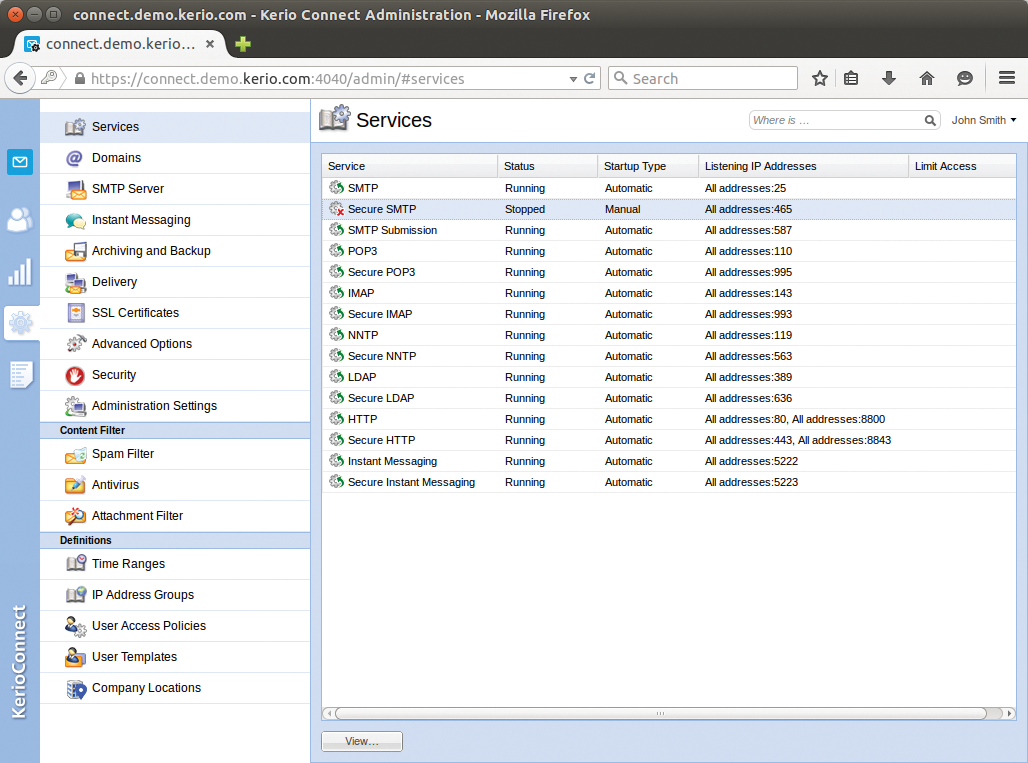
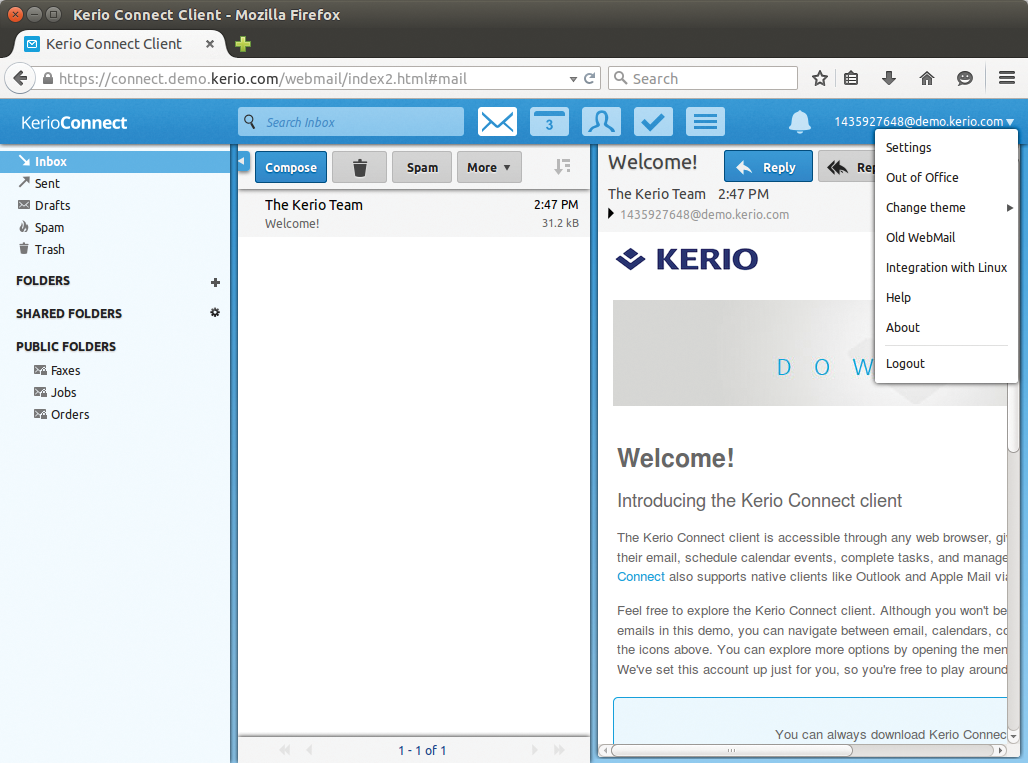
Although some individual solutions from the Linux and open source environment, such as SpamAssassin, OpenSSL, and Qt, are integrated, Kerio distributes its product Connect completely, and without any exception, under a proprietary and purely commercial license.
The product is available for Linux, Windows, and Mac OS X. Kerio is one of the first third-party manufacturers that has managed to implement Exchange Web Services (EWS). As a member of the calendaring and scheduling consortium, CalConnect, Kerio created one of the first commercial CalDAV and CardDAV implementations. Most users of Kerio Connect appreciate the good integration of proven communication technologies. The product supports open standards. For example, an XMPP-based instant messaging service is included as of Kerio Connect 8.1.
Thus far, Kerio has focused on customers with up to a few hundred mailboxes. Kerio Connect 8.5, which appeared in May 2015, also supports multiple servers in an organization for the first time and should therefore solve the scaling problem.
Kolab
A revamped version of the Kolab groupware tool [3] (Figure 3) was released at the beginning of 2013.The new version uses an extended data format and Roundcube as its webmailer instead of the Horde framework that many users considered antiquated.
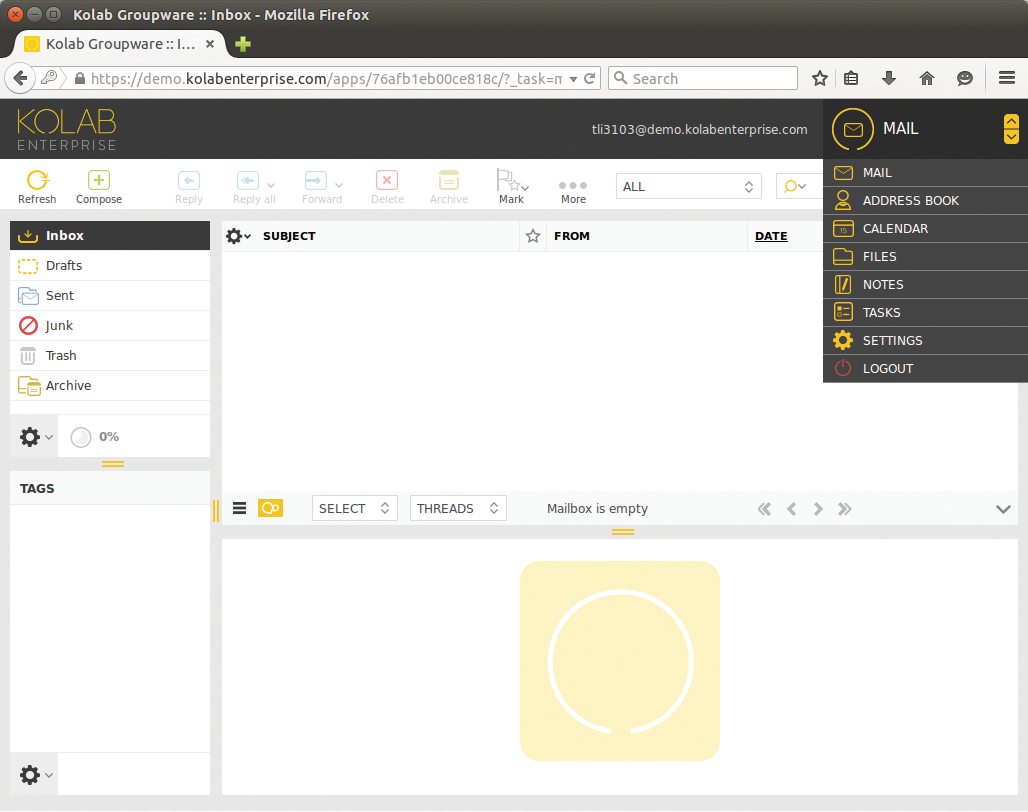
Kolab Systems, the driving company behind Kolab, has employed several developers from Roundcube's core team for years and still manages not to cannibalize the Roundcube universal webmail program by consistently outsourcing Kolab-specific functions to plugins.
The plans to offer a groupware hosting system based on Swiss law and data protection had been on the back boiler at Kolab Systems AG for some time. Just a few weeks after the first revelations by Edward Snowden and NSA spying, MyKolab was launched; it certainly gained customers, not only because of the leaks, but by gleaning customers from the Lavabit and Silent Circle mail services, which closed at almost exactly the same time.
At almost the same time, Kolab announced the new iRony access layer, with sabre/dav-based support for CalDAV and CardDAV. According to some customers, this solution has matured in such a way that Kolab is now also a serious alternative for Mac users.
A further milestone also occurred in 2013: Kolab Enterprise, which is maintained and updated annually by Kolab Systems, now follows the Red Hat Enterprise Linux model: The Community version is – much like Fedora – declared a developer version and not recommended for production use. Anyone who wants to experiment with it would be wise to check out the mailing lists [4]. The IRC channel #kolab also offers fast and competent help in case of problems.
The developers may have added a fair amount of content to the Kolab documentation portal docs.kolab.org recently, but it is still maintained by developers, for the most part, and thus of limited suitability for beginners. The docs are still worth reading, however, and very valuable information about advanced configuration is available in easily understandable how-tos.
Kolab is one of the few products that provides a cross-platform desktop client in the form of Kontact. Even Windows users can ditch Outlook if they are willing to tackle the KDE multitalented Kontact. The underlying Qt platform makes it possible to use the client on Linux and Windows, as well as on cellphones as a scaled-down version. In January 2015, Kolab Systems AG prescribed themselves and their products a visual revamp. This change is reflected in a new design of the Roundcube webmailer.
At the 2015 Kolab Summit at the start of May in The Hague (simultaneous with the openSUSE Conference), the people surrounding Kolab Systems CEO Georg Greve came up with a few innovations: "This will be one of the most important tasks for us in the next few years," Greve told the audience at the summit. Roundcube, represented by mastermind Thomas Brüderli, will by given widespread support, and developers will add new features, thanks to a crowd-funding campaign (Roundcube Next [5]; Figures 4 and 5). Kolab, which is traditionally heavily geared toward data security, will also be focusing on MAPI and Office integration, as well as on serving the particularly attractive health care sector.
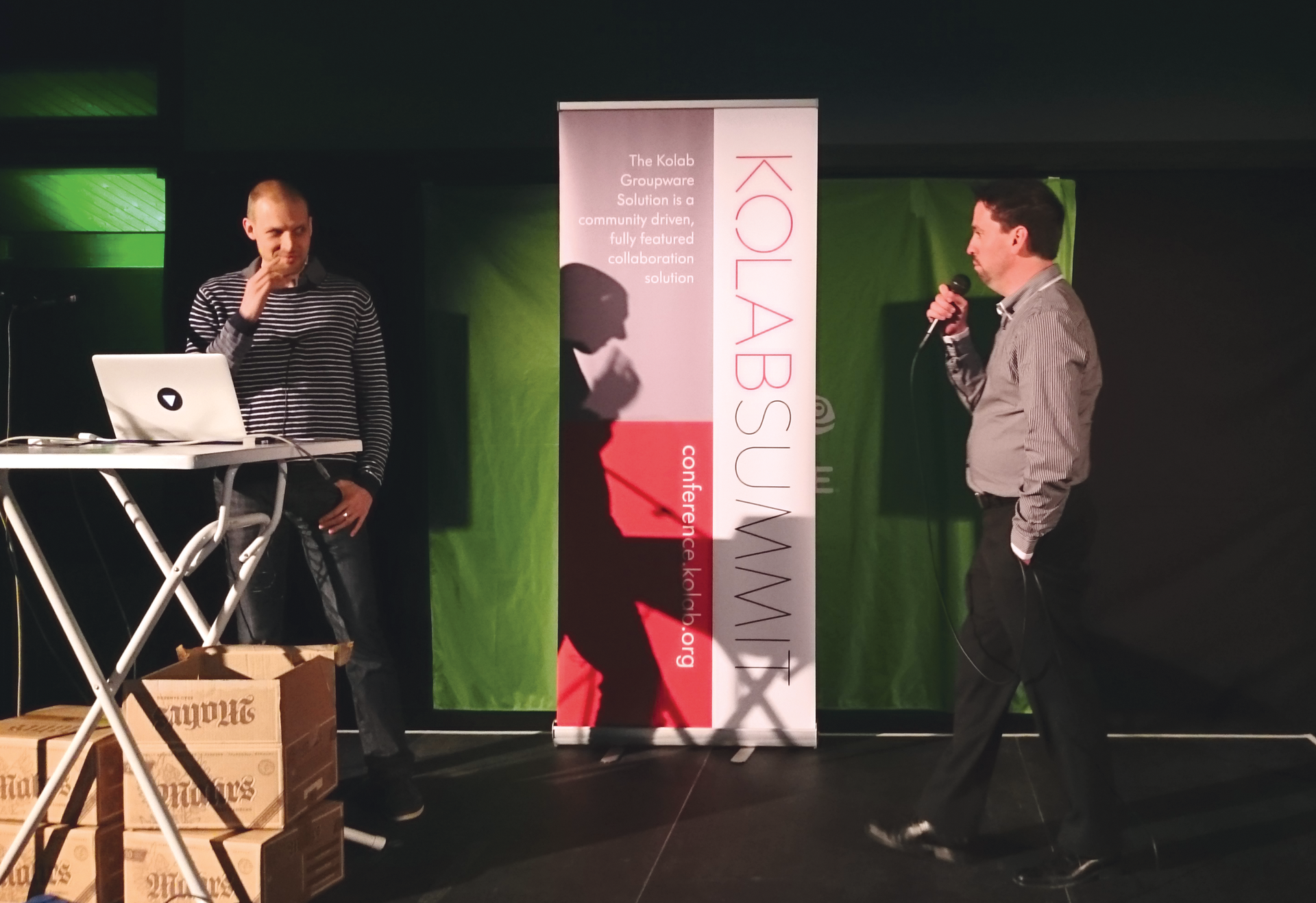

Open-Xchange
The OX example proves that investments can bear fruit: United Internet Ventures invested EUR15 million in Open-Xchange [6]. The company has constantly expanded the range of products around the OX app suite in recent years. A complete web-based office suite with OX Documents, OX Guard, OX Drive, and OX Messenger has developed from the groupware-only suite. However, this investment also shows the strategic interest of United Internet as owners of 1&1 Hosting, which Open-Xchange has been using as the basis of its offering for years.
Anyone who has not previously heard of Open-Xchange and reads about it on the website might not realize it is suitable for operation in a small company. Large hosting providers are the main focus of the website, which is hardly surprising given the investors that have joined the fray in recent years. In addition to 1&1 Mail Business, Open-Xchange also provides the underpinnings for offerings from Host Europe or Mailbox.org, which was launched by Berlin-based Heinlein Support GmbH at the beginning of 2014.
The architecture of the SLOX (SUSE Linux Open-Xchange Server) product is excellently suited for providers because existing IMAP servers can usually be expanded to include groupware functions without any major renovation work. The OX App Suite (Figure 6), which was first published in November 2012, is not just a newly designed web front end for the functions already available in the classical web GUI of OX 6, it is also a basis for additional applications that have been published at a rapid pace since the beginning of 2014:
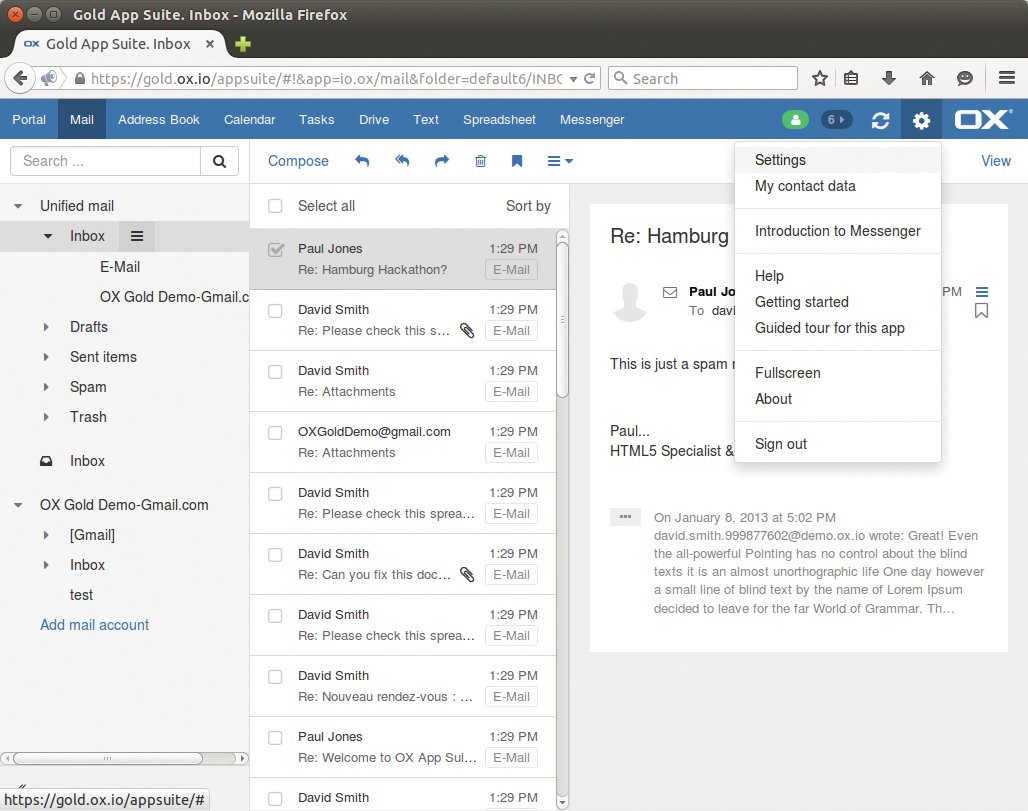
- OX Drive, for file management and synchronization;
- OX Documents, with word processing and spreadsheets;
- OX Guard, for encrypting messages;
- OX Messenger, for chat and (video) telephony as the most recent addition.
Among other things, PGP compatibility for OX guard is on the roadmap for the upcoming update cycle in the second quarter. A presentation module will be added to OX Documents at a date that is not yet fixed. Offerings based on Open-Xchange can therefore be seen as an alternative to Google apps and comparable services. Against this background, Open-Xchange's acquisition of the Dovecot Oy IMAP server and PowerDNS name service vendor are understandable.
The OX App Suite/Server Edition is intended for installation on the corporate network. The OXASE appliance has been discontinued. However, the current installation version offers an equivalent replacement from a functional perspective via the Univention Corporate Server (UCS) app center. Because OXASE is also based on UCS, the manufacturers have created a conversion path for affected customers.
Anyone who is interested in using the OX App Suite in their own company and is looking for technical information should take a look at the knowledge base [7].
Scalix
OpenMail subsidiary Scalix [8] experienced a checkered history with its investors. Scalix had started in 2002 with slightly less venture capital than Zimbra received; however, after five years, the original investors lost interest and sold out to Xandros. Xandros subsequently achieved some success, including being the software vendor for the Eee PC netbook, which brought Asus an estimated turnover of $1 billion.
The success was not, however, long lasting; later investments, such as those from Linspire, acquired by Xandros in 2008, proved an economic disaster. In 2010, the money ran out and they were looking for new investors for Scalix. The penny stock company Sebring Software paid $12 million for Scalix in 2011. A management buy-out at the end of 2013 coincided with a company restructuring and the release of Scalix 12.0. With a small intermediate step, the current version 12.5 (Figure 7) rolled out at the end of March 2015. A glance at the release notes [9] shows various bug fixes and some attempts to modernize the architecture.
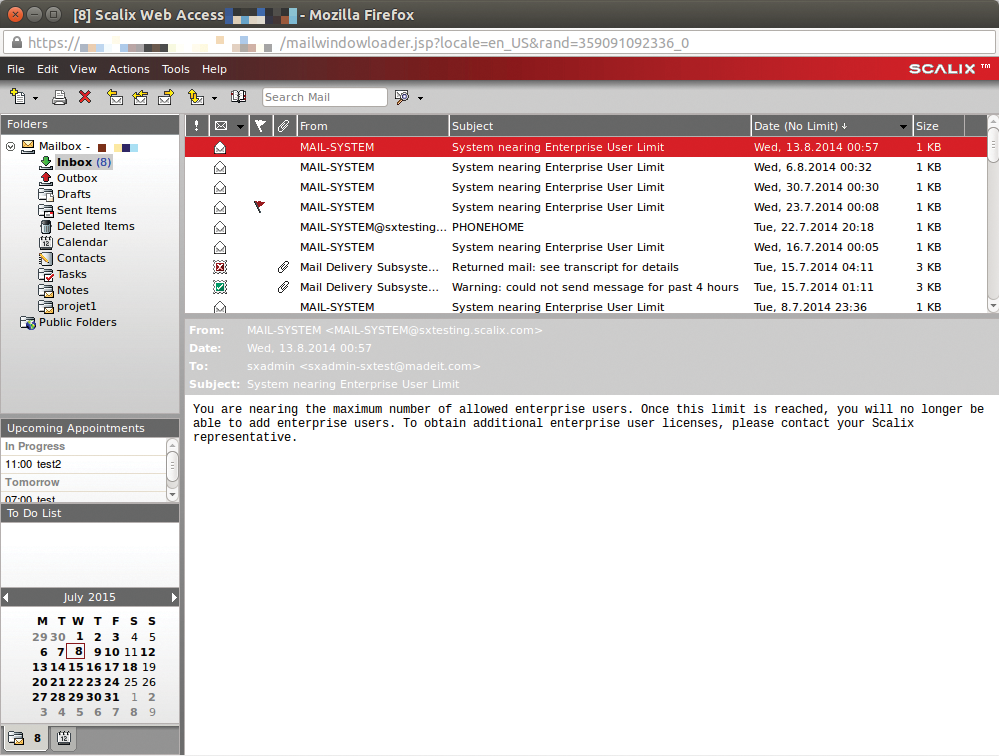
Scalix might be more mature and easy to scale both horizontally and vertically, but its directory service contains elements of the X.400 basis inherited from HP OpenMail that prevent the source code from being disclosed. The original plans to put the core under an open source license with Scalix 12 were unenforceable because of the former Xandros ownership; the changes are still on the to-do list, however.
In the past two years, the Scalix developers first tried to install support for current versions of Outlook and to fix bugs. Scalix 12.5 comes with some new features. The archiving interface, which you can activate with a commercial license, is now able to export in the Exchange journaling format and can thus address common archiving solutions.
A feature often in demand is the option to use an SMTP address defined as an alias for sending via Outlook or the webmail program. Scalix 12.5 implements this function. In Microsoft Exchange, this option is only possible with third-party add-ons; other products – Kerio, for example – can now do this, too.
Scalix needs to improve the support for newer versions of Exchange ActiveSync. Despite the task management that has finally been integrated, and which is compatible with Outlook and ActiveSync, the webmail program Scalix Web Access appears slightly antiquated in the face of modern HTML5 clients. A makeover is intended for version 13.
The company released a preview of Scalix 12.6 at the same time as the release of 12.5. In the press release for version 12.5, the manufacturer explained its strategy of wanting to support Microsoft Outlook in the long term as an essential component of the "Client of Choice" strategy.
Tine 2.0
Metaways demonstrated last year that groupware does not always require big money. The makers of Tine 2.0 [10] wanted to improve the CalDAV connection and thus launched a comparatively modest crowd funding campaign for EUR2,100. The project reached its goal with a little extra. The 2.0 "Koriander" release appeared in the fall of 2014 with numerous improvements for CalDAV.
Zarafa
Zarafa [11] (Figure 8) manages completely without venture capital. However, in a company designed for permanent growth, you do not get far without cooperation. In early March, Zarafa announced collaboration with Amazon regarding the Amazon Workmail [12] product. At the same time, the Dutch-German company made it clear that this is not a departure from the option to operate Zarafa on-premises in the company data center.

Zarafa has focused on maximizing compatibility with Microsoft products over the past few years, but the company announced a new product strategy in January 2015 that entails moving away from Outlook. It is quite possible that the new partnership with Amazon promoted this decision. Whether the technology tipped the scales is anyone's guess, but it might well have helped that lately, some of the Dutch Zarafa developers have switched to Amazon Web Services.
The company had good success supporting Outlook on Windows, but attempting to provide a scalable implementation of Exchange Web Services (EWS) was much less successful. The risk of constantly committing resources to allow it to follow Microsoft has become too big for Zarafa.
In an announcement at the beginning of April 2015, Zarafa extended support for the current Outlook versions via the connector (Zarafa Client) by a year until April 2017. The open-source EAS implementation Z-Push [13], which is heavily influenced by Zarafa, is an option cited time and time again for customers who want to continue working with versions as of Outlook 2013. The developers have already proved that they are capable of implementing functions that go beyond the EAS specification. It is conceivable that they will, in this way, succeed in providing slightly more groupware functionality, such as the ability to delegate access to other mailboxes via ActiveSync. Mobile clients could also benefit from these changes.
Zarafa is focused on the web app now as version 2.0 on the client side. Liberation from Microsoft's groupware ideas and specifications offers an opportunity to design a product with an individual vision and distinct features. Solutions for collaboration tools that go beyond the email medium to encompass the integration of web meetings and WebDAV-compatible file management for Z-files are planned as a first step. However, because functions already exist in a similar form in other solutions, Zarafa will have to play catch-up.
A frequent point of criticism is that a graphical administration interface is missing. The Z-Admin version presented in 2011, a development of the Yaffas project [14], was unfortunately unable to fill this gap. Although the daily administration tasks, such as user and group management, are generally performed through the usual integration in existing directory services, such as Active Directory or OpenLDAP, using the directory services' native tools, tools for managing the server itself, are still not forthcoming.
Kopano could provide part of the solution in the future [15]. Kopano is a cloud service announced for the second quarter of 2015; it takes Zafara's changed business model into account and aims to let users manage and optimize their own Zafara installations – either as a cloud service or on a local network.
Zimbra
The original investors of Zimbra [16] are the absolute winners of the venture capital poker game. The starting capital reported by insiders as $15 million was all it took – thanks to the clever placing of products at companies like Comcast, one of the largest US Internet providers. The investors sold the company for $350 million to Yahoo in September 2007. Yahoo's intention of establishing a counterbalance to the world dominance of Google Apps with Zimbra in its portfolio did not work out. In January 2010, VMware announced the acquisition of Zimbra for an undisclosed sum, but certainly less than the amount paid back in 2007.
The involvement of VMware, however, was not particularly conducive to the development of Zimbra. The existing partner network was unable to cash in on an additional collaboration solution in the portfolio and also failed to integrate the product meaningfully into its own offerings.
In July 2013, VMware finally sold Zimbra to Telligent Systems, a company which – until then – had been active in the area of social software but that had at least managed to make its way into market researcher Gartner's magic quadrants and thus become relevant for decision makers.
A few months later, Telligent fully renamed itself Zimbra and, since then, has marketed all products under a single umbrella. This change was slightly irritating, because Zimbra Social and Zimbra Collaboration had almost identical version numbers. However, the signals emanating from the company in recent months, in particular relating to open source licensing and better support for the community, give rise to the hope that interesting things could still happen.
Consolidation was in the cards when Telligent took over Zimbra almost two years ago. Telligent has been trading under the evidently better known name since September 2013. The name "Zimbra," by the way, is borrowed from a Talking Heads song.)
A first major sign was set with the revival of the Zimbra desktop buried under the VMware aegis. Not all end users will like it – perhaps just because it doesn't say Outlook on the box – but Zimbra does provide a real alternative to the top dog.
The industry has been talking about HTML5 as a technological basis for an offline-capable web client for years. Zimbra Collaboration 8.5, released in August 2014, is one of the first offline-capable clients based on HTML5 (Figure 9). Customers also insisted that the developers include Exchange Web Services (EWS) support.
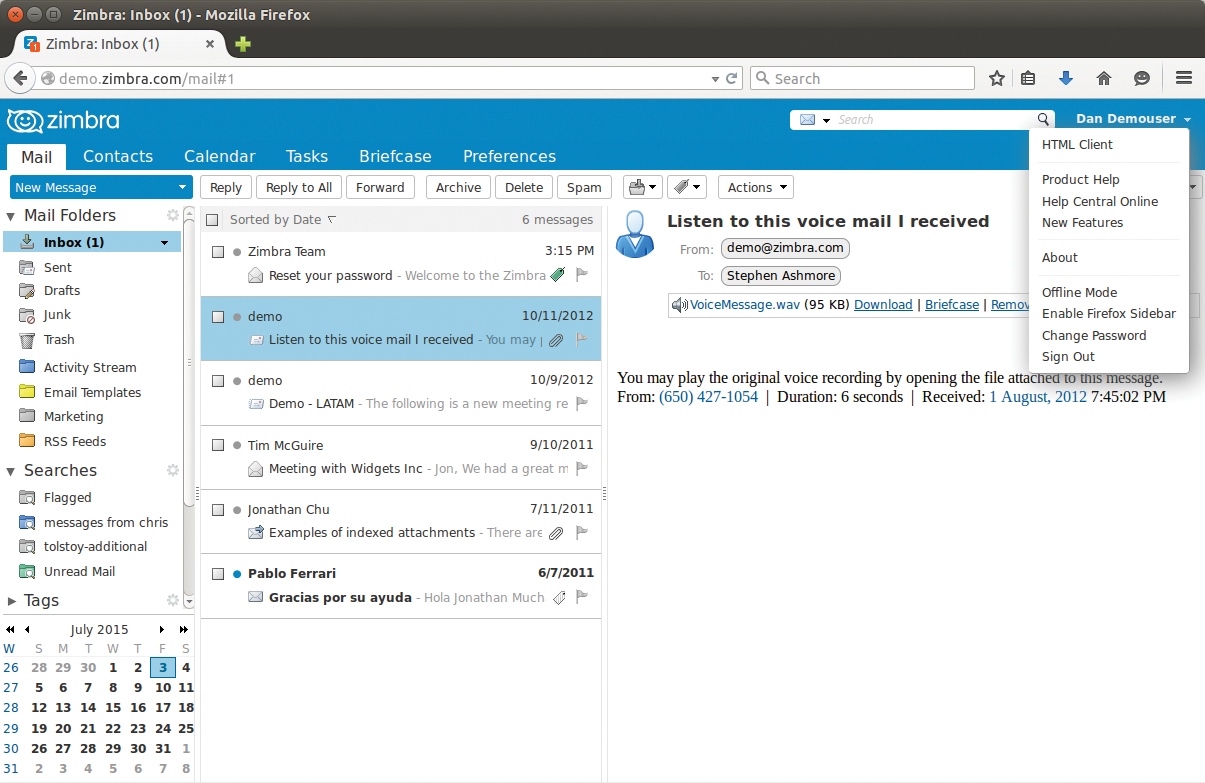
Other than the new features, the release of v8.5 also brought about a change of licensing for the open source edition to licensing models in accordance with the standards of the Open Source Initiative. The server platform is now licensed under the GPLv2; the web application is under the Common Public Attribution License (CPAL) Version 1.
In the last major release of Zimbra Collaboration 8.6 in December 2014, the developers focused strongly on the issue of accessibility and barrier-free operation of the web client, as per the US section 508 [17] specification. Keyboard support throughout is due for implementation in Version 8.7.
Zimbra has also tried to upgrade its own portfolio through acquisitions of companies and products. Mezeo, a provider of file sync and share software, was added in July 2014. A new product named "Zimbra Sync and Share" was all ready to go, but a July 2015 announcement revealed that, because of a consolidation in the market for file sharing and disappointing feedback from testers, they would abandon the product [18]. According to the vendor, the plan is to supplement or completely replace the existing Zimbra data storage in the medium term.
The Zimbra product shows surprising continuity, given the frequent changes of ownership. Because large customers from the early years stayed around, it was possible for the core team to continue working normally under new management. The result is a versatile solution with sophisticated installation and administration tools, as well as good and comprehensive documentation.
Conclusions
Not much is new in Kerio and Tine (except for CalDAV and CardDAV for both of them). PostPath is completely out of the race. Zarafa is shaking a little because several developers left the company, but mainly because of the decision not to support Outlook in the future. A new version of Scalix provides some useful new features.
Zimbra is as financially strong as ever but is mainly represented in the US, which also leads to great continuity within the software. It is quite possible that Zimbra might soon move more in the direction of open source, which is the traditional domain of Kolab. Kolab developers and managers are continually promoting and investing in open source software – a tendency that was very much on display at the recent 2015 Kolab Summit.
